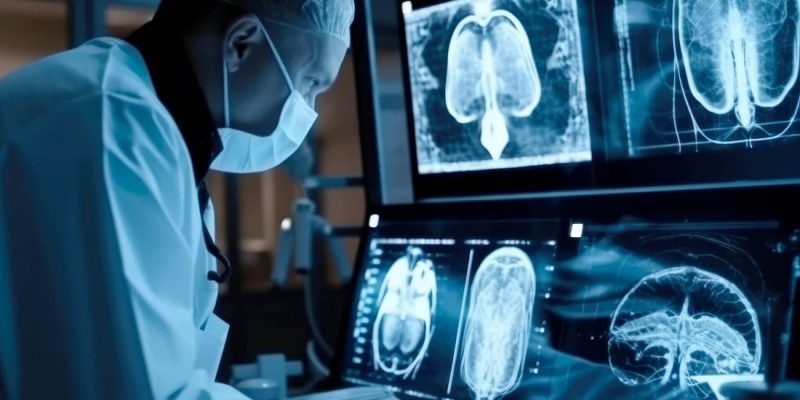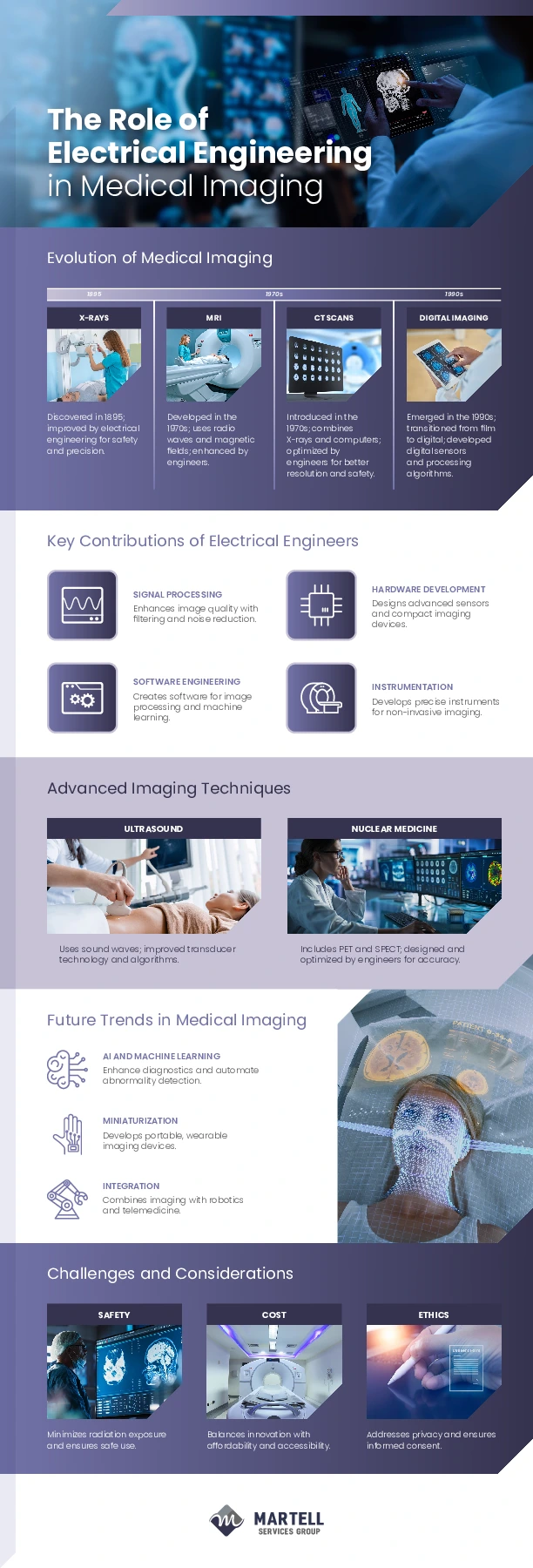
Electrical engineering has been at the forefront of medical imaging innovation, playing a crucial role in transforming how we diagnose and monitor health conditions. From X-rays to the latest artificial intelligence-driven systems, electrical engineers have continually improved medical imaging technologies, enhancing both accuracy and patient safety. Here’s a closer look at how electrical engineering has shaped the medical imaging landscape.
The journey began in 1895 with the discovery of X-rays, which revolutionized medicine by providing a non-invasive way to view the internal structure of the body. Electrical engineers have since refined this technology, transitioning from film-based systems to digital X-ray machines. This change improved image quality, speed, and patient safety, making diagnostic imaging more effective and accessible.
In the 1970s, the emergence of computed tomography (CT) scans and magnetic resonance imaging (MRI) took medical imaging to new heights. Both of these advanced imaging techniques rely on sophisticated electrical engineering to produce high-quality images. MRIs, using radio waves and magnetic fields, and CT scans, using X-rays for cross-sectional imaging, have seen continuous improvements in image resolution, scan times, and patient comfort over the years.
The 1990s saw a shift from analog to digital imaging, driven by innovations in digital sensors. This shift has greatly improved image clarity and allowed for better data storage, retrieval, and sharing, significantly improving the workflow in medical facilities.
Today, electrical engineers are pushing the boundaries with advancements in ultrasound and nuclear medicine. Improvements in transducer technology, signal processing, and detector software have made these imaging devices more portable and effective, making them indispensable in emergency and prenatal care. Additionally, new technologies in nuclear medicine are offering in-depth insights into metabolic processes, aiding in the diagnosis of a wide range of diseases.
Artificial intelligence (AI) and machine learning are increasingly being integrated into medical imaging, automating the detection of abnormalities and enhancing diagnostic accuracy. These technologies can analyze large datasets quickly, identifying subtle patterns that human eyes might miss, leading to faster and more accurate diagnoses.
Miniaturization is another exciting area of progress. Electrical engineers are designing portable and wearable imaging devices that make it possible to conduct high-quality imaging in remote or underserved areas, improving access to care for those who would otherwise have to travel far for specialized medical services.
Despite these incredible advancements, challenges persist. Reducing radiation exposure, improving affordability, and addressing concerns around data privacy are all areas that need continued attention. Ongoing collaboration between electrical engineers, healthcare professionals, and policymakers is key to ensuring the continued progress of medical imaging technology.
For a deeper dive into the intersection of electrical engineering and medical imaging, check out the accompanying infographic. Provided by Martell Services Group, an electrical contractor company.












